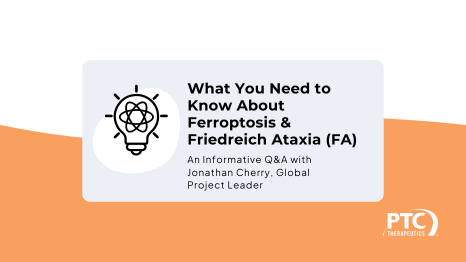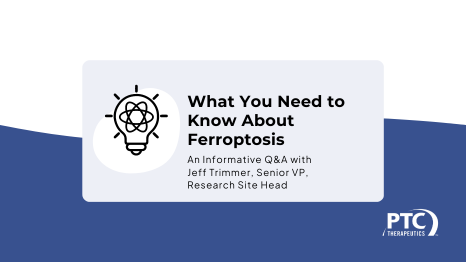Inflammation & Ferroptosis

The Inflammation & Ferroptosis platform is based on a family of enzyme targets – oxidoreductases – which are critical to the generation and regulation of energy that are key to disease pathology in the central nervous system (CNS) and other organ systems. The platform utilizes expertise in electron-transfer chemistry to modulate key biological processes beyond the reach of current drug development approaches.
Ferroptosis is a recently discovered form of programmed cell death dependent on iron and characterized by the accumulation of lipid peroxides. It is genetically and biochemically distinct from other forms of regulated cell death such as apoptosis.
The process of ferroptosis causes certain cell types that participate in the innate and adaptive immune response to become activated and produce pro-inflammatory cytokines. At PTC, we have grouped ferroptosis and inflammation into one platform because a hallmark of ferroptosis that is understood to cause cell death and disease progression is inflammation.
How does ferroptosis relate to Friedreich’s ataxia?
Friedreich’s ataxia (FA) is a rare, genetic, progressive neuromuscular disease that mainly affects the nervous systems causing muscle weakness and loss of balance and coordination. It is usually caused by the loss of a protein called frataxin which is involved in iron metabolism and essential for proper function of mitochondria, the powerhouse of all cells in the body.
When the mitochondria are not working correctly, cells become stressed and there is an accumulation of iron and reactive oxygen species. Together these initiate a feedforward cycle of inflammation that eventually triggers ferroptosis which causes the stressed cells to die. In FA, this results in the loss of nerves and muscle.



